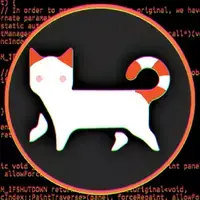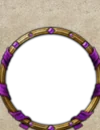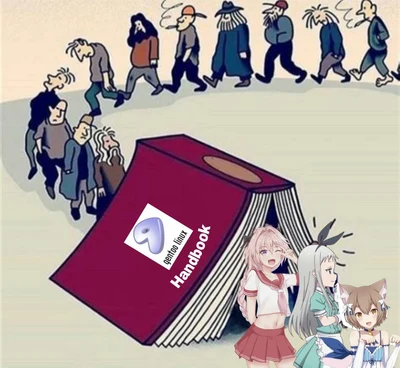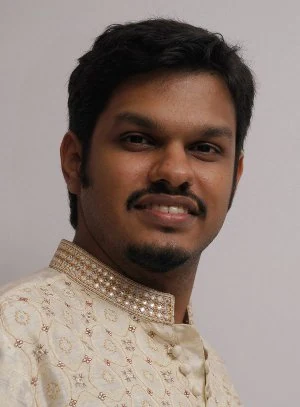Inside Elon Musk’s first meeting with Twitter employees
With Twitter staff still reeling from mass layoffs and executive resignations, Musk took questions from employees for nearly an hour. Here’s everything he said.
By ALEX HEATH
Updated Nov 10, 2022, 7:16 PM MST
With barely 20 minutes' notice, Elon Musk gathered Twitter employees on Thursday to address them directly for the first time.
During a nearly one-hour Q&A session, which The Verge obtained a recording of — you can read a full transcript below — Musk was blunt about Twitter’s financial state, his ambition to turn Twitter into an app for payments, his love for “gizmos,” and that he now expects employees to work with a “maniacal sense of urgency.”
Elon Musk spoke about offering banking services via Twitter:
I think there’s this transformative opportunity in payments. And payments really are just the exchange of information. From an information standpoint, not a huge difference between, say, just sending a direct message and sending a payment. They are basically the same thing. In principle, you can use a direct messaging stack for payments. And so that’s definitely a direction we’re going to go in, enabling people on Twitter to be able to send money anywhere in the world instantly and in real time. We just want to make it as useful as possible.
And later offered more detail:
If you can simply have one balance on Twitter that can simply go positive or a negative, and when it goes positive, the interest rate is better than what you could receive elsewhere, and when it goes negative, the interest rate is lower than what you see elsewhere, now you have a much simpler system.
Then you attach a debit card to the Twitter account so that you have backward compatibility into the payments system because not everyone will accept Twitter. So if they have above a certain balance, you automatically send people a debit card. You want backward compatibility to the existing financial infrastructure.
In the US, there’s still a small number of checks that are used. So if your landlord is demanding that you send a check, you have to have some non-zero number of checks. Then we would send a small number of checks to those that need to have checks. Then you add automatic payment. Then over time, you basically address what are all the things that you’d want from a finance standpoint. And if you address all things that you want from a finance standpoint, then we will be the people’s financial institution.
What circumstances could lead Twitter to declare bankruptcy:
We just definitely need to bring in more cash than we spend. If we don’t do that and there’s a massive negative cash flow, then bankruptcy is not out of the question. That is a priority. We can’t scale to 1 billion users and take massive losses along the way. That’s not feasible. I don’t think we will.
Twitter’s remote work policy:
Now, if somebody’s contribution is so significant that they can overcome the communication difficulties of being remote, then they should absolutely remain at Twitter. But it will be a higher bar. They have to be that much better to overcome the communication issues of being remote. There are plenty of people at Tesla and SpaceX that do work remotely, but it is on an exception basis for exceptional people. And I totally understand if that doesn’t work for some people. That’s the new philosophy at Twitter.
Let me be crystal clear. If people do not return to the office when they are able to return to the office, they cannot remain at the company. End of story.
Basically, if you can show up in an office and you do not show up at the office, resignation accepted. End of story.
And Twitter’s potential as a TikTok-like platform for shortform video:
But right now, content creators cannot post the length of video that they would like to post, and they cannot monetize it, which means they cannot pay the bills. These are not like super complicated things. They’re pretty basic. We’re not trying to put YouTube out of business, but I’m just saying, do we really need to give YouTube a whole bunch of free traffic? Maybe not. So at least give creators the option if they would like to put their video on Twitter and earn the same amount as they would, or maybe slightly more, on YouTube or TikTok or whatever the case may be.
I was actually flipping through the Twitter video where, once you go into kind of a full-screen video mode, you can just start flipping through videos. It’s actually not bad. I was like, “Okay, well, it’s pretty good.” I think building on that makes a ton of sense.
How do we start the creator flywheel if we don’t have video ads to begin with? This is where subscriptions come in because YouTube also has subscriptions, and they don’t show ads in subscriptions. So I think this is a case where it does make sense to start spending some money and at least matching to slightly better than matching creators on YouTube and saying, for now, we’ll just pay them money that is reasonably competitive, maybe slightly better than YouTube for their content on Twitter as well.
Twitter’s first couple of weeks under Musk’s ownership have been nothing short of tumultuous. They started with Musk unceremoniously firing much of the C-suite and laying off roughly half of Twitter’s global workforce. He revamped Twitter Blue to automatically give paid subscribers a blue verification check mark, which quickly led to impersonation running rampant on the social network.
Executives continue to resign, including the heads of trust and safety and ad sales, both of whom Musk elevated after he took over and both of whom left Thursday. A lawyer at the company has told employees to seek whistleblower protection “if you feel uncomfortable about anything you’re being asked to do.” Meanwhile, Musk has tried to convince Twitter’s advertisers to return amid the chaos to no avail, even as the company’s user growth sees “all-time highs,” according to him.
Do you know more about what’s going on inside Twitter? If so, I’d love to chat confidentially. You can reach me via email: [email protected] or through the contact form on my Linktree. Then we can set up a secure thread on Signal.
Below is a transcript of Musk’s first all-hands meeting with Twitter employees, lightly edited for clarity:
Elon Musk: Hello. Nice to meet you all. I’m very excited to be here, and I think the long-term potential for Twitter is immense. I think you’ve heard, perhaps, some of the things that I’ve said publicly, and I think what you’ll find is that the things I say publicly are the same things that I say privately.
I think Twitter can perform an incredibly valuable service to the world and be the public town square where people exchange ideas and where, once in a while, they change their mind. And where you have a battleground of ideas that can hopefully take the place of the violence in a lot of cases. So people can just be talking instead of physically fighting. I think we could actually be a force for peace, which would be amazing. I think there’s a tremendous amount of good that Twitter can achieve for humanity. And that’s what we’re going to strive for.
So in order for us to achieve that good, how do we get a lot of people on the platform? There are 8 billion humans. If we don’t have at least a billion humans on the system, then we have a very small percentage of humans. So we want to have, you know, a reasonable percentage of humans. This is not for the sake of money or anything like that. It’s just in order to do a lot of good, we need a lot of people on the platform and a lot of people talking.
I think it would be really interesting to get more dialog between countries and to surface tweets that are interesting. We have an amazing market share in Japan. There are probably in any given day some super interesting tweets that are happening in Japan, but we never see them in the US or almost never see them. It would be, I think, very exciting to take tweets from different countries and different language groups and expose people from different countries and different language groups to ideas that are interesting, entertaining, funny — where you learn something from around the world. So I think we’ve got a great potential to connect people around the world and expose them to, like I said, ideas and content that’s going to entertain them. If we can take the most interesting, entertaining, funny stuff from around the world and show people that, it’s going to be great.
And we also want to expand to be sort of a multimedia platform. We are that to some degree. We are the strongest when it comes to anything that’s writing and real time. But we also want to have that for pictures and video and not in a way that copies what others do. I don’t think we should not copy something just because someone else did it. We just want to focus on how we make Twitter as compelling as possible, where it’s maximum enjoyment, maximum learning. Where you spend an hour on Twitter, and you don’t regret it. Sometimes, you know, on some of the social media platforms, you might spend an hour, but you, like, kind of regret that, right? Not naming names but, you know, it’s like you want to spend an hour and be like, “Wow, that was a great hour.”
I think there’s this transformative opportunity in payments. And payments really are just the exchange of information. From an information standpoint, not a huge difference between, say, just sending a direct message and sending a payment. They are basically the same thing. In principle, you can use a direct messaging stack for payments. And so that’s definitely a direction we’re going to go in, enabling people on Twitter to be able to send money anywhere in the world instantly and in real time. We just want to make it as useful as possible.
As a general principle, if we are solving the reasons that people click away from Twitter not to trap people on the site... You know, let’s say somebody is a content creator on YouTube. Provided they are able to post their video on Twitter and monetize the video at least to the same degree as on YouTube, then naturally, they would just post their video on Twitter as well. But right now, content creators cannot post the length of video that they would like to post, and they cannot monetize it, which means they cannot pay the bills. These are not like super complicated things. They’re pretty basic. We’re not trying to put YouTube out of business, but I’m just saying, do we really need to give YouTube a whole bunch of free traffic? Maybe not. So at least give creators the option if they would like to put their video on Twitter and earn the same amount as they would, or maybe slightly more, on YouTube or TikTok or whatever the case may be.
Anyway, I think the future is super exciting, and I look forward to making it happen with you guys.
Moderator: [Inaudible] ... and other kinds of challenges that we’re already facing, even with the user base at its current size.
Musk: So the question is how to make sure that the growth does not outpace the risk?
Moderator: Yeah.
Musk: Well, I’m obviously a big fan of getting people to be verified, leveraging the payment system and iOS and Android security. I think we want to have automated checks as well as manual checks. I’m open to ideas here. We will obviously care about real user growth, not anything that appears to be user growth that is not. We care about authentic users. And I think as long as we’re taking steps to authenticate real users and exiting ones that are not good, and that it is expensive and difficult to create bot armies, we will succeed.
The issue without payment verification, especially without having a phone and a card, is that you can do a million bot accounts a day and with the cost of a tenth of a penny. It’s not so much the $8 because, obviously, state actors have more than that. But can they put together a million phones and a million credit cards? That’s much harder. That’s where they’re going to stumble.
Inaudible question about reviving Vine.
I think it’s really just, do we have compelling shortform video as opposed to exactly what Vine was? It’s not “let's copy Vine from whichever year with ancient code.” It’s really just, how do we have compelling shortform video, just compelling content in general? I was actually flipping through the Twitter video where, once you go into kind of a full-screen video mode, you can just start flipping through videos. It’s actually not bad. I was like, “Okay, well, it’s pretty good.” I think building on that makes a ton of sense.
I told a whole bunch of people this morning that I was on it for like maybe 15 minutes, and I could have easily been on it for half an hour. The videos that it showed me were interesting. It was some good videos. And when I told a roomful of people that this morning, they didn’t know it existed. So I think if we try to surface it and make it more obvious that it exists, that would be a good move.
Inaudible exchange with an employee.
You know, I’ve got no problem with battle, obviously [laughs]. Yeah, just email it to me. I’m pretty responsive on email. Every now and again, it’s a crisis, and if I didn’t respond within 24 hours, email me again. It rarely takes me longer than 24 hours to respond. Usually it’s within hours. And I’m also for like, “Hey, let’s have some fun and let’s have some adventure here.” Let’s just try some crazy stuff. And if it doesn’t work, we’ll stop it. And if it does work, we’ll amplify it. But I think that’s really fun and exciting.
Just try weird stuff. It’s nothing ventured, nothing gained. If we’re too cautious, then how do we make revolutionary improvements? Revolutions are not done with caution. So we want to try things, ideally things that don’t break the whole system, but I think as long as we’re agile and we react quickly to improve things and correct mistakes, I think it’ll be fine.
Let’s just get a bunch of content creators that we think are cool on YouTube and say, “Hey, would you consider putting your content on Twitter, and we’ll pay you 10 percent more than YouTube and see how it goes?”
Inaudible question from an employee.
We need some video ads is what you’re saying. It’s hard to register video ads if we don’t have video ads. It’s a great question. How do we start the creator flywheel if we don’t have video ads to begin with? This is where subscriptions come in because YouTube also has subscriptions, and they don’t show ads in subscriptions. So I think this is a case where it does make sense to start spending some money and at least matching to slightly better than matching creators on YouTube and saying, for now, we’ll just pay them money that is reasonably competitive, maybe slightly better than YouTube for their content on Twitter as well. And I think as we build our subscriber base, because YouTube is doing the exact same thing, they’re building a subscriber base.
I actually try to use YouTube as a nonsubscriber to just kind of get a feel for what’s going on with advertising. Frankly, I find their advertising to be brutal. It seems to be one scam ad after another.
Inaudible interjection.
YouTube has 2.6 billion users? Oh man, we’re nothing!
Employee: Yes, and only 80 million subscribers.
Musk: [Laughter] That’s a lot. Look, my kids were basically educated by Reddit and YouTube, which, like, uh-oh. I think let’s just try it. Let’s just get a bunch of content creators that we think are cool on YouTube and say, “Hey, would you consider putting your content on Twitter, and we’ll pay you 10 percent more than YouTube and see how it goes?” Let’s do that. Okay, great. So you will do that?
Inaudible exchange.
Okay, collectively, you’ll do it. Great. Please do it. Let’s take action. I’m a big believer in having just a maniacal sense of urgency. So if you can do it after this meeting, I would do it after this meeting. Just a maniacal sense of urgency. Like, if you want to get stuff done, maniacal sense of urgency. Just go “aah!” Hardcore!
Employee: So on the subscriber part, it’s $8 right now, right?
Musk: Oh. Really? [Laughter]
Employee: I know your purpose is to get people verified. Are we open to micropayments and other things to get people verified?
Musk: It’s definitely just one step at a time. I intentionally limited things to only iOS, and just a small number of countries, to not have a massive amount of fraud that our systems... that we couldn’t handle. So the hardest thing to commit fraud on right now, relatively speaking, is if you require a phone and a credit or a debit card.
And so then we’re piggybacking over the payment system as well as Apple. This doesn’t mean it’s impossible to scam. Obviously, it’s still possible, but it is very difficult to scam at scale. They can do individual accounts, but they can no longer do a million accounts.
With the web, you don’t want someone taking a million credit card numbers off the dark web and then spawning a million instances that appear to be individual users going a zillion proxies around the world. And then we’ve got a million fake accounts. That’s why web is going to be last, and we’ll do that with great caution. And there are just some bugs in the system, and people need to download the latest version of Twitter.
We’re still, I think, giving people a country error, which is kind of embarrassing. US users are getting a country error, which is incorrect. It actually should be “You have the wrong version of the Twitter app” error. So just like stuff like that. That’s why it’s been a relatively soft launch, and I have not tweeted from my main account, “Sign up for Twitter Blue.” It was very intentional.
Employee: I have a follow-up question. When we talked about followers, subscribers. I think Jack [Dorsey] had an interview about two or three years ago talking about how he regrets having the follow button. What’s in your vision about this, and do you think that’s something we will want to curate because we do want to promote creators?
Musk: I think “subscriber” or some other word would probably be a better word than “follow” because “follow” sounds more like, do you have a cult or something? And I'm like, I guess I kind of do have a bit of a cult, but like, not everyone wants to be a cult member, you know?
So it’s more like, I’m interested in what the person or entity has to say. So that’s why I’m following them. But I’m not really just their minion. I’m just interested in what they have to say, and I may agree or disagree with it. So I think “follow” is probably not the ideal term. And I hate “super follow” because it just sounds like a superfan, like I’m your No. 1 fan. It just sounds like, is this person going to stalk me and kill me? So “super follows,” I think we’re changing that term to “subscriber” or something. That’s a better term.
Employee: Do you want to reserve this graph of people together, like bulk subscribing to this person’s content?
Musk: I am very much open to ideas here. I wouldn’t say I’m stuck on anything. The following really just means that I think this person says interesting things, has interesting and maybe funny content. That’s why I want to see what they have to say. I'm not necessarily always agreeing with it or always thinking that the content is great. But this is how I want to spend time — listening, reading, hearing what this person has to say.
Employee: The reason why I’m asking is a lot of our technology is built toward that kind of graph, and that is where I think it’s a critical decision we have to make. I have one more: the home timeline. It’s very hard to gauge the intent of the user through just a general













Jump in the discussion.
No email address required.
"Hi, do you take Apple Pay?"
"Sorry, we only accept Muskcoin through Tweet Pay."
Jump in the discussion.
No email address required.
More options
Context